Day of the Dead
Book fairs always get me. I love browsing the tables for new ideas. When I noticed that this book was bilingual, it was a done deal! It’s Skeleton Time! by Ana Galán and Rodrigo Juján, takes place during the Day of the Dead, or el Día de los Muertos. On November 1st and 2nd, families in Mexico (and a few nearby countries) remember loved ones who have passed away. Many of my students over the years have been of Mexican descent, and Day of the Dead is very important in their families. Other students already have some background knowledge about the Day of the Dead from the fabulous Disney movie, Coco. However, National Geographic Kids has a great kid-friendly article to introduce students to the background of the Day of the Dead. Before introducing this book, we discuss the Day of the Dead celebration, so that we understand the context. I love that Day of the Dead has become more popular, with decorative sugar skulls and such being found with the Halloween decor in places like Target. However, it’s essential that kids gain deeper understandings for other cultures. We discuss the ofrendas, or altars, and the vigils kept at the cemeteries. Once we’ve done this, we can begin our story.
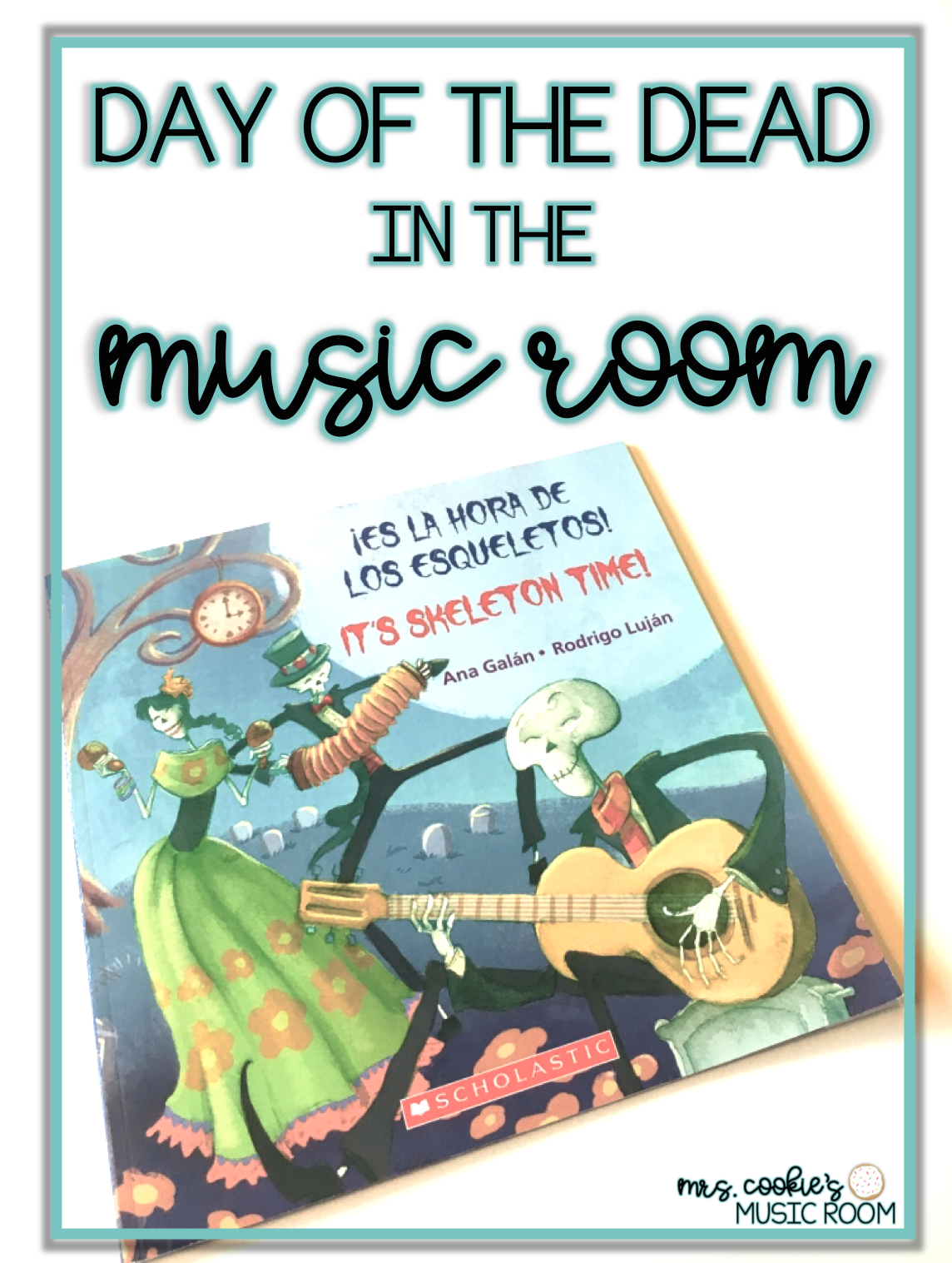 El Reloj de la Calavera
El Reloj de la Calavera
The story pairs well with the chant El Reloj de la Calavera, which you can read more about in this post by Music A La Abbott. The original Day of the Dead game calls for students acting out what the skeletons are doing for the verse during each refrain. However, very few of my current students speak or understand much Spanish, which makes it more difficult for them to remember the verses. The picture book provides beautiful visuals to help non-Spanish speakers gain understanding of the text. Since the book is bilingual, I read the English translation while showing the motion for the verse. Then when I read the Spanish, they repeat the motion. Lastly, they drum the rhythm for the refrain. When I read the story, I change a few words to fit the original chant. For example, the book’s first page says, “Cuando el reloj marca la luna, un esqueleto sale de su tumba.” However, I use the original “la calavera” rather than “un esqueleto.” After reading each page, the students chant “Tumba tatumba, tumba tumba tumba” while drumming the pattern. In my previous school, we could use our bucket drums. However in my new school, we’ll drum it on Poly Spots with our drum sticks (and it will be much quieter!).
Finding Ti-Tika
Drumming the refrain after each page is a great way to go over the ti-tika rhythm. After reading the story and drumming, I hand out manipulatives for students to notate the rhythm of the refrain. Just as Amy Abbott shows in her post, I found skull mini erasers at Target for students to show the iconic notation of the refrain’s rhythm.
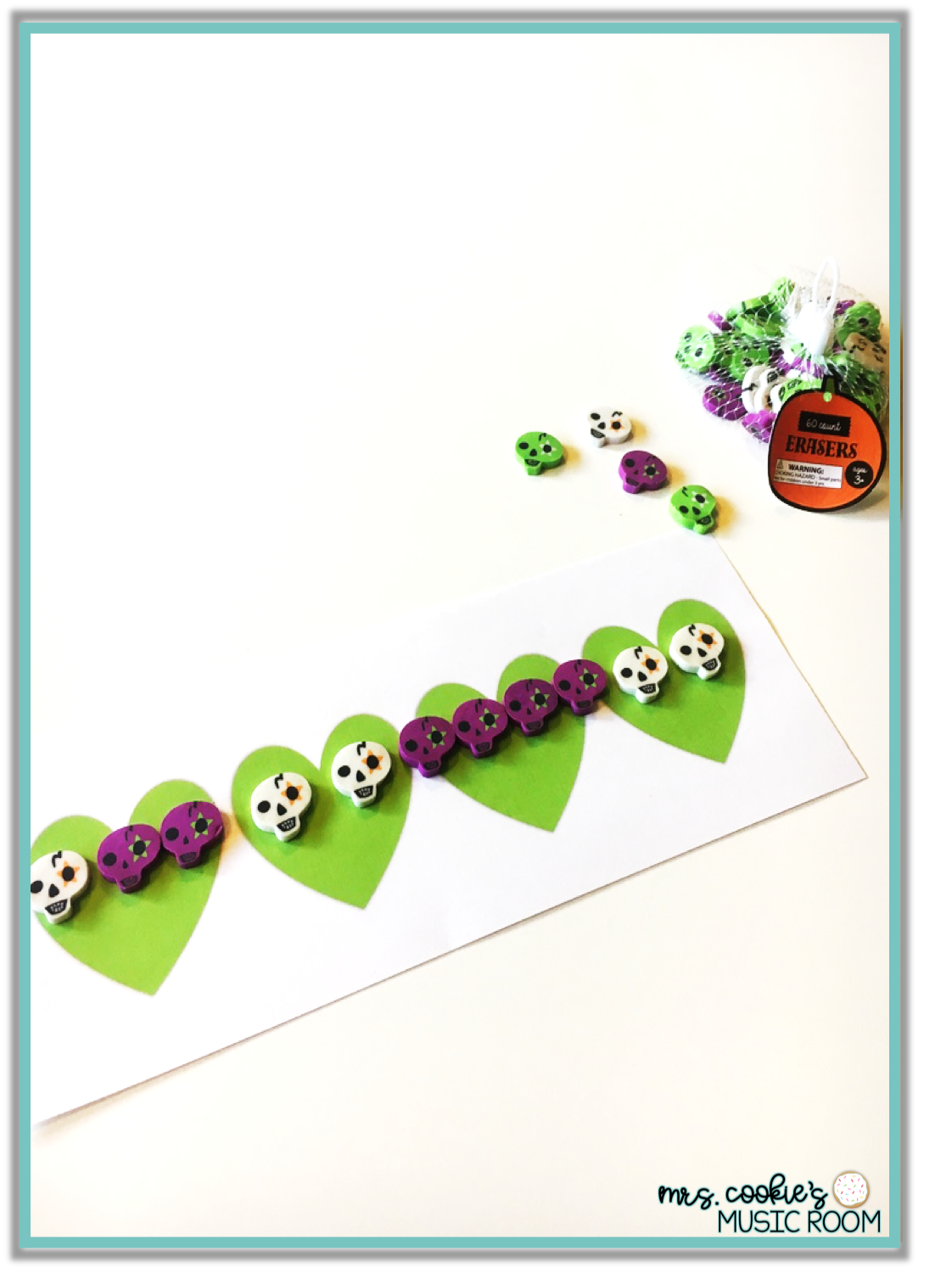 I like students to work through these steps with a partner, so that they can help each other, and talk through their reasoning. Partner time is also important for ELL’s, who need a low-pressure opportunity to discuss their ideas in their new language. Once the partners have shown the correct iconic notation, they can trade their erasers for dry erase markers. Then, they can write the rhythmic notation on the heart strips, and drum the rhythm they’ve written. I’ve done this same process with other songs and concepts, such as using the jack-o-lantern mini erasers to notate the rhythm of the song “Pumpkin, Pumpkin.” Basically, if you see a new type of mini eraser at Target, you can probably justify purchasing them for this process! When I don’t have a mini eraser to fit the song, the kids use bingo chips instead. We teachers know how to work with what we have in a pinch!
I like students to work through these steps with a partner, so that they can help each other, and talk through their reasoning. Partner time is also important for ELL’s, who need a low-pressure opportunity to discuss their ideas in their new language. Once the partners have shown the correct iconic notation, they can trade their erasers for dry erase markers. Then, they can write the rhythmic notation on the heart strips, and drum the rhythm they’ve written. I’ve done this same process with other songs and concepts, such as using the jack-o-lantern mini erasers to notate the rhythm of the song “Pumpkin, Pumpkin.” Basically, if you see a new type of mini eraser at Target, you can probably justify purchasing them for this process! When I don’t have a mini eraser to fit the song, the kids use bingo chips instead. We teachers know how to work with what we have in a pinch!
Danse Macabre
For younger students, I thought this book might be a great way to introduce Saint-Saens’ Danse Macabre. After discussing the history of Halloween and Día de los Muertos, students can listen to the music while you read the book to them. The background behind Danse Macabre and the Day of the Dead are very similar, and students can make connections. Then, students can create motions to match the skeletons on each page, and keep a steady beat with the music. Danse Macabre was always a favorite of mine, and this book invites students to enjoy the music in a new way.
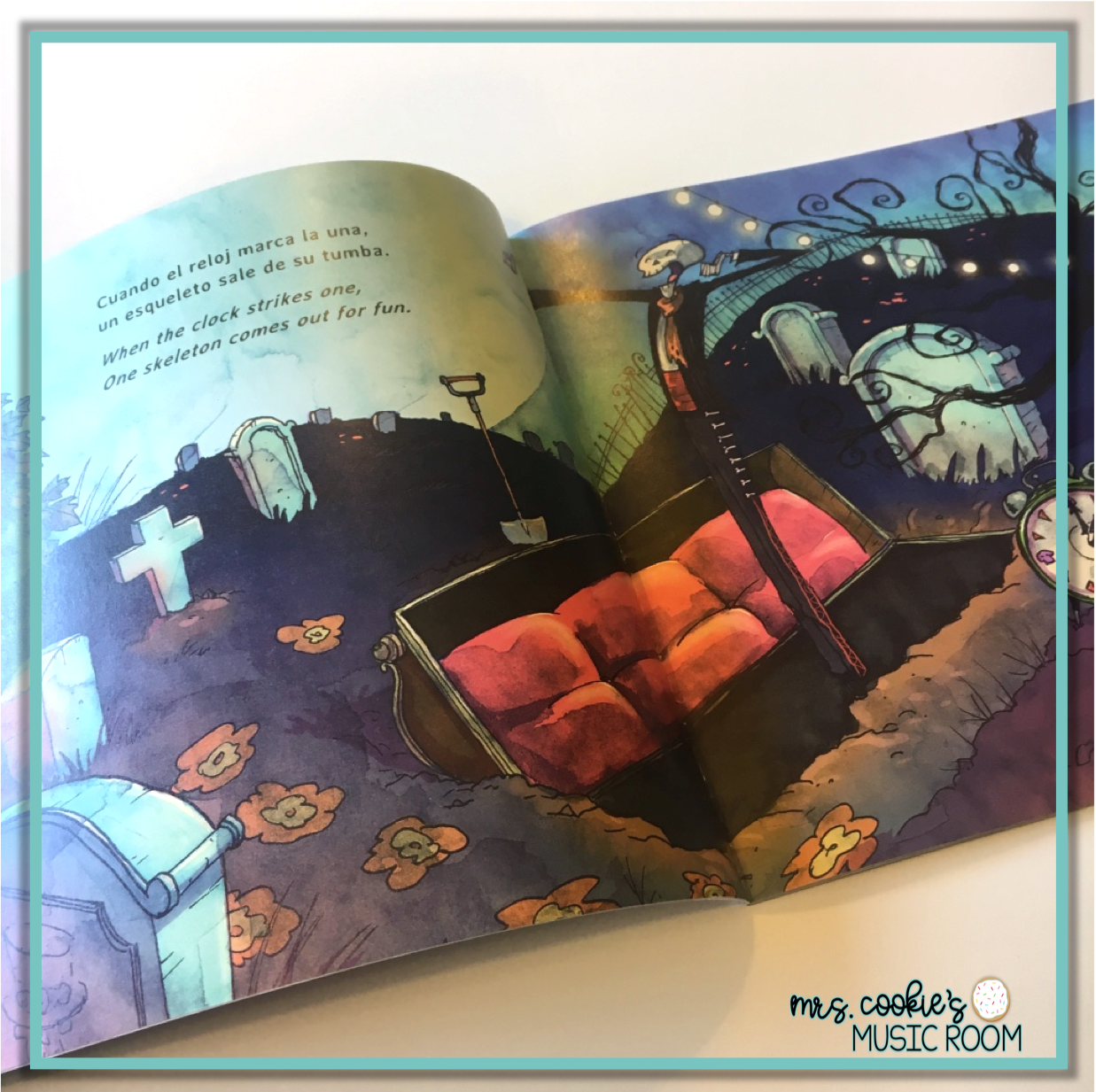
I’m so glad I found this gem of a book. I love finding useful picture books that aren’t too “babyish” for my older students. But even more, I love making cultural connections in my classroom. What books do you love to use to make cultural connections? I love any excuse to go to a book fair, or fill up my Amazon cart!
Happy teaching!

Looking for more spooky activities? Click here.
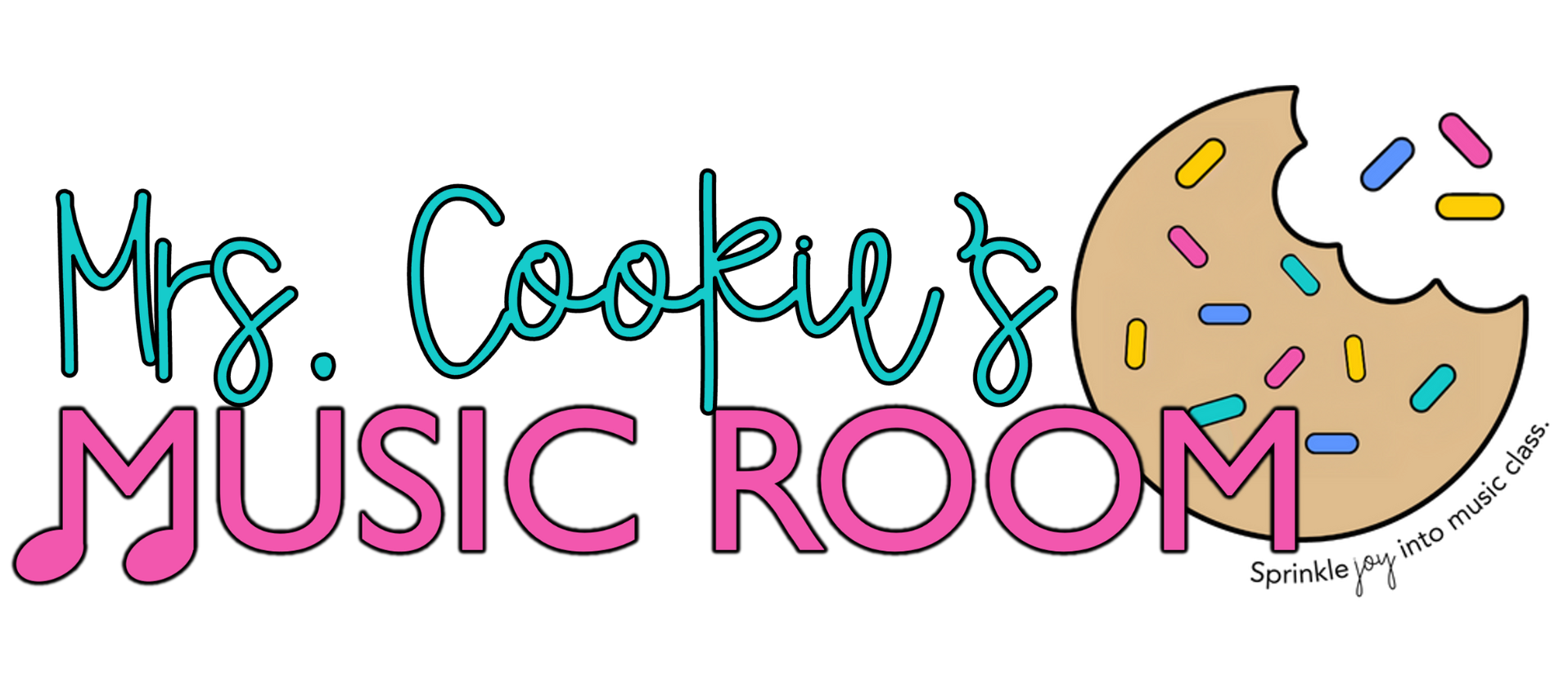

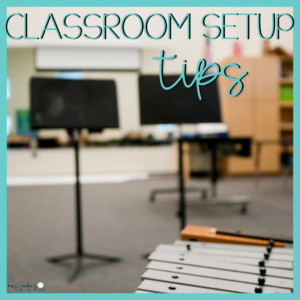


No Comments